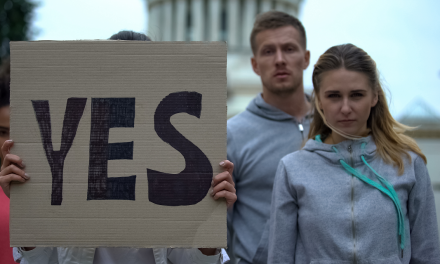The Missouri Rural Health Association (MRHA) Get Link’d 2021 Conference featured several breakout sessions breaking down the role transportation plays within social determinants of health. Speakers highlighted the impacts inadequate transportation has on rural, suburban, and urban communities alike and what equitable transportation may look like.
During “Mobility Management: A Collaborative Solution for a Complex Issue,” Sherry McDonald, Ed. D. and Administrative Consultant II, MU Extension and School of Medicine’s Office of Health, Outreach, Policy, and Education (HOPE) detailed her collaborative efforts expanding transportation access across Missouri. McDonald, along with MU Extension and MRHA, spent 2020 developing curriculum for a Mobility Management Certification Program. Mobility management does not have a singular definition, but possesses four key pillars: coordination, collaboration, advocacy for the unheard, and liberated access to transportation.
Mobility Management
McDonald recalled first hearing the phrase “mobility management” on April 22 of last year. Though she was unsure of exactly what equitable access to transportation in Missouri should look like, her team filled in the rest. “I had one piece of this, and the rest of the huge team had the rest of the pieces,” she said. “We could not have done this alone. I cannot stress how collaborative this was and how necessary it was to build these programs.”
According to McDonald, the team presented a problem statement identifying how inadequate transportation can be a barrier to a fulfilling life and the impact it has on a person’s physical and mental health. They knew where they wanted to end up, but had yet to articulate how they would get there.
Mary Gordon, MRHA’s HealthTran Director, filled in the gaps. She envisioned a collaborative transportation network of available rides and vehicles in the community – not just for medical care needs, but also pharmacy and grocery trips and social outings. “That is equitable transportation,” McDonald said. “We aren’t just looking for equitable, we want liberation without bias.”
During the Q&A portion, an audience member posed a question about equity in transportation. She provided the example of clients without driver’s licenses due to probation or trouble with the law. They may have to attend meetings with parole officers and court dates, but have no license to drive. Being late or missing a meeting can result in being sent back to jail, making public transportation an impractical solution.
These people also need their employer to allow them to leave work during the day, as well as rely on transportation to and from work to these meetings and appointments. The audience member asked, “How do these people fit into mobility management?”
Gordon responded, “What you’re talking about is what a mobility manager needs to know in their community. There may be resources there that people don’t know about.” According to Gordon, many pockets of funds exist but are unused, simply because people are unaware.
“It takes someone who is focused and that’s where their focus is. As mobility managers, the largest problem we see is nobody talking to all the silos and connecting the dots, having conversations, and listening.”
Liberating Transportation
In rural areas, lower population density results in a lack of investment into infrastructure, making what little transportation is available inconvenient, unaffordable, or unreliable. Transportation barriers have long plagued Missouri communities. While the state has the seventh-largest infrastructure system in the U.S. – bigger than that of Kansas and Illinois combined – Missouri ranks 45th nationally in revenue per mile. Hospitals, pharmacies, and grocery stores may be out of reach without a vehicle, directly impacting the health and wellbeing of rural residents.
While funding may be available to improve transportation infrastructure, silos may create pockets of unused funds, as Gordon suggested. Access to health care facilities alone also does not immediately create equity. Transportation solutions must expand beyond giving people a necessity; equity includes independence and choice. Equitable transportation allows people to freely travel to and from required parole meetings and court dates, or to social outings and events, as conveniently as to medical appointments.
While services like Medicaid transport may be available, they are not a solution. For example, Medicaid transport doesn’t include trips to pharmacies for necessary medications. It also requires scheduling five days in advance, forcing people needing urgent transport to utilize emergency services.
Public transportation, such as a bus route, may help, but does not end the problem. Route times, pick up locations, and drop offs may not coincide with everyone’s needs, especially when commuting to and from work. “They don’t need just access to medical appointments and grocery stores – they need access to their jobs,” McDonald said.
Because of this, the next step for her and her team is getting employers on board with the Mobility Management Certification Program. The program, created and delivered in collaboration between MU Extension and School of Medicine, Office of HOPE, and MRHA, assesses community transportation needs and identifies possible areas for solutions. The team hopes that having employers understand and address the transportation gaps affecting their workers will facilitate a collaborative solution with employees at the forefront.
Mobility Management Certification Program
This program is an online course featuring multiple training modules, readings, and optional supplemental materials like podcasts. It is self-guided and can be completed within four weeks to six months, depending on the user’s pace. Quizzes throughout the training allow trainees to verify immediately that they are comprehending the material and can be retaken as many times as necessary. A survey during the training asks participants to identify needs and barriers in their community, how many public services are currently available, what the costs are for each, and more factors.
When a conference attendee asked, “Who is intended for this training?” Gordon replied with another question: “Who could be the champion in your community?” The program is not intended for a specific job title, level of education, or expertise in a specific field. Gordon explained the flexibility is intentional because people in various sectors have different perspectives to bring to the table. She hopes the training will bring forth people looking to step up and become champions of their communities as mobility managers.
Though the program’s current funding ends on December 31, 2021, additional grant funding will allow the program to continue. McDonald and Gordon plan to begin developing a national certification program, pulling from successful programs in other states such as Wisconsin.
“We really are excited about getting this training out,” Gordon said. “It’s the only thing we’ve seen really making changes. People who receive mobility management training make differences in their community. The more people we have making a difference, the more we can improve Missouri and how we recognize transportation.”
HealthTran: Bridging the Access Gap
One solution working towards equitable transportation in Missouri is HealthTran, a program delivered by MRHA. HealthTran is a volunteer-driven ridesharing service that pairs drivers in a community with residents in need of transportation. Volunteers can tailor their hours and service areas to fit their schedule and are reimbursed $0.80 per mile.
During the Get Link’d Conference session, “Transportation and the Social Determinants of Health,” Kenney Hutchison and Kelly Ast from the West Central Missouri Community Action Agency (WCMCAA) detailed their collaborative efforts to continue expanding MRHA’s HealthTran program throughout Missouri. Hutchison is a certified community action professional and the agency’s regional mobility coordinator. Ast serves as the agency’s community services director.
While MRHA’s HealthTran program focuses on rural Missouri, WCMCAA is considering a suburban model due to the high volume of need in those communities. Through a one-year Health Resources and Services Administration (HRSA) grant, they were able to implement the program and begin identifying and evaluating local social determinants of health and inequities. WCMCAA currently has four priorities for their program: provide rides, develop technology, continue building collaborations, and increase funding.
Identifying Riders and Drivers
Driver recruitment began fall 2020 and rides started being delivered February 2021. “We’ve just been at it a short time, but in that time, I can’t say enough how important having people from all different sectors coming together is to meet transportation needs for our clients,” Ast said.
For each county served, they are able to use the ride scheduling technology to build rider profiles for the area: age, demographic, service area, transportation needs, etc. “We’re hoping that building this profile of who needs transportation helps us better target this area,” Ast said. The more in depth of a rider profile they are able to create, the better they will understand how to create effective transportation access for community members.
This also allowed them to understand who the drivers are – or who knows where to find them. Working with Mennonite populations in the area, they discovered that many people transport goods for their families. Even if they are not able to volunteer themselves, they know a vast network of people happy to get involved and have helped increase driver recruitment.
Community Collaborations
To foster sustainable solutions, WCMCAA identified opportunities for collaboration with existing resources. They divided the region’s nine counties, pairing counties with many resources improving transportation with counties that possessed less. This created “territories” benefiting each other without the need for external assistance.
According to Ast, when they did seek outside help, their networking involved a lot of listening, asking questions, and asking for help. They approached potential collaborations with an overall idea, but organizations often came back with their own. They continued to ask for what they needed, listened to the opposing perspective offered, and worked toward a solution that best utilized each organization.
To increase the likelihood of funding opportunities, WCMCAA recommends local, regional, and state partnerships. When coming across a community, they listen and ask questions to assess needs and connect the dots to other resources if none are available. “They’re different from county to county,” Ast said. “A lot of listening and a lot of questions go in before we start.” If WCMCAA doesn’t have the means to solve the problem, they connect them to organizations who can, often creating opportunities for further collaboration.
They also take these concerns straight to the top. Quarterly, they contact policy makers to remind them of transportation’s effect on social determinants of health. “We planted seeds,” said Hutchison. “We may not get anything right now, but it puts us on someone’s radar that we are looking to improve transportation.”
After meeting with multiple senators and policymakers through the years, Hutchison said responses can vary, but the ultimate goal is to keep putting that bug in their ear. “You just have to keep telling your story and getting it out there.”
WCMCAA’s dedication to advocacy and equity shone clear throughout their presentation and was validated by testimonials from MRHA staff. “You have taken our ideas and suggestions and ran with them,” said Mary Gordon. “You truly have been an inspiration for rural communities across Missouri. Congratulations and keep up the good work!”
“This doesn’t happen overnight; it takes a lot of contact, conversation, and patience,” said MRHA’s program coordinator Lisa Branson in the final moments of the session. “You’re doing an excellent job, and we’re happy to have you as members.”
To learn more about mobility management across Missouri and the Mobility Management Certification Program, visit: https://mrhassociation.org/mobility-management/.
To learn more about HealthTran, becoming a volunteer driver, or bringing transportation to your community, visit: https://mrhassociation.org/healthtran/.








